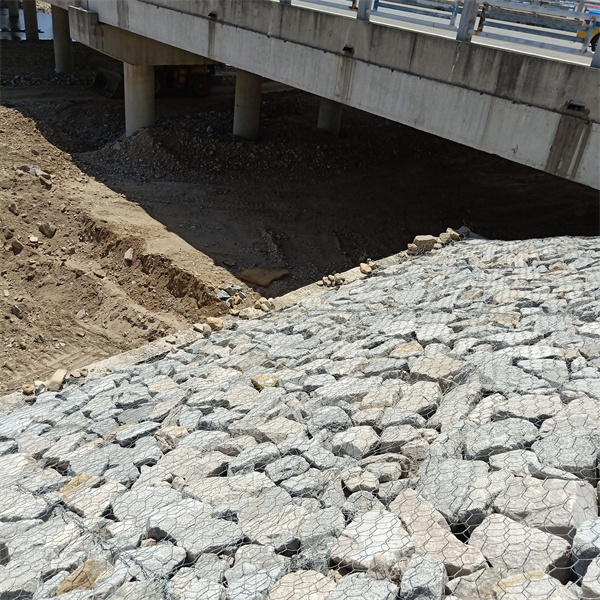des . 09, 2024 15:58 Back to list
best gabion slope
The Best Gabion Slope Solutions for Erosion Control
In recent years, the use of gabions, or wire mesh baskets filled with stones, has gained popularity as an effective solution for controlling erosion and stabilizing slopes. These versatile structures not only offer practical benefits but also blend seamlessly into natural landscapes, making them an appealing choice for both construction projects and environmental protection. In this article, we will explore the best gabion slope solutions and their advantages, ensuring that you are well-informed when considering this method for your erosion control needs.
Understanding Gabions
Gabions have been used for centuries in various forms, but modern gabion walls and structures are engineered for strength and effectiveness. Typically made of galvanized or PVC-coated steel wire, these baskets are filled with rock, stone, or other heavy materials to create durable barriers. Gabions are popular in civil engineering for retaining walls, slope stabilization, and channel lining. Their permeability allows water to flow through, reducing pressure buildup behind the structure and minimizing the risk of failure.
Benefits of Gabion Slopes
1. Erosion Control One of the primary advantages of gabions is their ability to prevent soil erosion. By providing a sturdy and stable structure, they help to retain soil in place, especially on slopes where gravity and water runoff can cause significant erosion.
2. Environmental Integration Gabions can be filled with local stone, blending naturally with the surrounding environment. This feature makes them an aesthetically pleasing option for developers and landscape architects who want to maintain a natural look while providing protection against erosion.
3. Cost-Effectiveness Compared to traditional retaining walls, gabions are often more affordable. The materials used are usually locally sourced, which can cut costs related to transport and acquisition. Additionally, their installation is relatively straightforward, potentially lowering labor costs.
4. Durability and Longevity Gabions are robust structures that can withstand harsh weather conditions, including heavy rainfall and flooding. Their ability to adapt to soil movement ensures that they will remain effective over time, making them a long-term solution for slope stabilization.
best gabion slope

5. Habitat Creation Beyond their primary function, gabions can serve as habitats for various plant and animal species. Over time, vegetation can grow within the gaps of the stones, creating green spaces and enhancing local biodiversity.
Best Practices for Gabion Installation
While gabions are relatively easy to install, following best practices ensures optimal performance
1. Site Preparation Proper site assessment is crucial. Identify the slope's angle and soil composition to determine the appropriate size and type of gabions needed.
2. Drainage Considerations Incorporating adequate drainage systems around gabion structures will prevent water accumulation, which could undermine the stability of the slope.
3. Fill Material Selection Choose stones that are clean and of adequate size to prevent shifting within the gabion baskets. Using a variety of stone sizes can help with stability and improve aesthetic appeal.
4. Regular Maintenance Although gabions are low-maintenance structures, periodic inspections are necessary to ensure that they maintain their integrity and continue to function as intended.
Conclusion
Gabions represent one of the best solutions for slope stabilization and erosion control. Their versatility, cost-effectiveness, and environmental benefits make them an attractive choice for both urban planning and environmental conservation projects. By understanding the advantages and best practices associated with gabion installation, you can make informed decisions that will protect landscapes and infrastructure from the inevitable forces of nature. Whether you are a homeowner, contractor, or landscape architect, gabions offer a reliable way to manage slopes while enhancing the natural beauty of your surroundings.
-
Why PVC Coated Gabion Mattress Is the Best Solution for Long-Term Erosion Control
NewsMay.23,2025
-
Gabion Wire Mesh: The Reinforced Solution for Modern Construction and Landscape Design
NewsMay.23,2025
-
Gabion Wall: The Flexible, Seismic-Resistant Solution for Modern Landscaping and Construction
NewsMay.23,2025
-
Gabion Wall Solutions: The Durable, Decorative, and Affordable Choice for Every Landscape
NewsMay.23,2025
-
Gabion Basket: The Durable and Flexible Alternative to Traditional Retaining Walls
NewsMay.23,2025
-
Gabion Basket: The Proven Solution for Slope Stability and Flood Control
NewsMay.23,2025
-
Versatility of Chain Link Fence Gabion
NewsMay.13,2025






